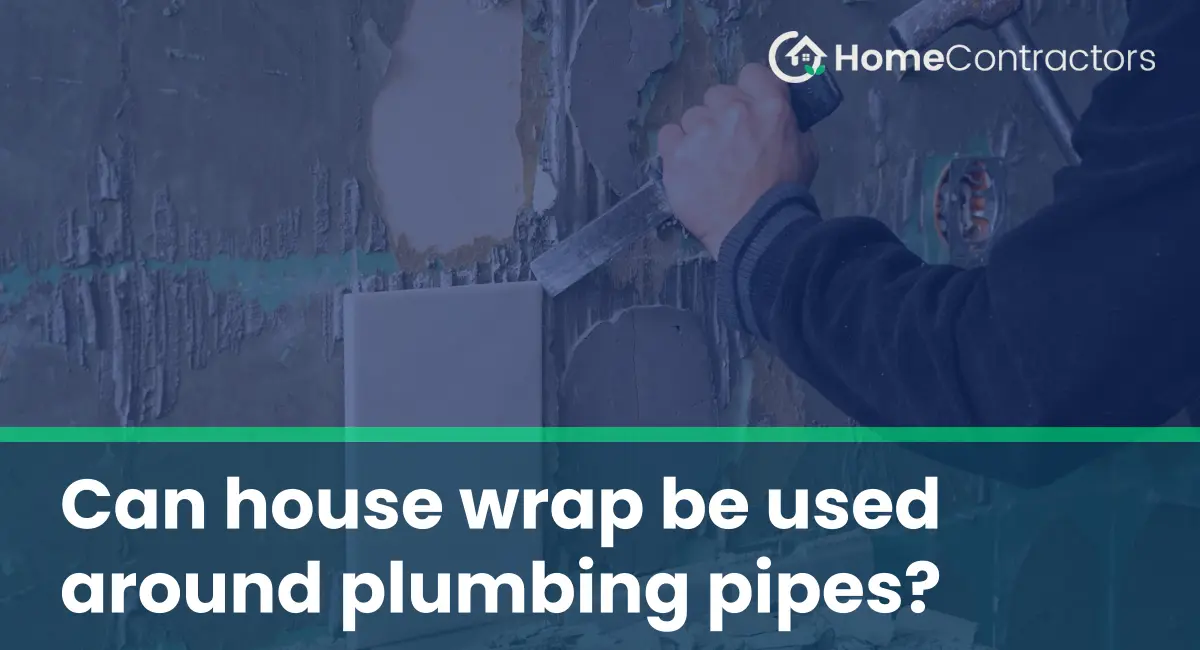House wrap is a vital component of the building envelope, providing a protective barrier against moisture intrusion and air leakage. It is typically installed on the exterior of a house, underneath the siding or cladding, to prevent water from entering the building while allowing for the diffusion of water vapor.
While house wrap is primarily used to protect the walls and insulation of a house, it is not commonly installed directly around plumbing pipes. However, there are certain situations where it may be appropriate to use house wrap around plumbing pipes to provide an extra layer of protection and enhance the overall performance of the building envelope.
Understanding House Wrap and its Application
Before delving into the possibility of using house wrap around plumbing pipes, it’s important to have a clear understanding of what house wrap is and how it is typically applied. House wrap is usually made of a breathable material, such as a woven or non-woven synthetic fabric, which allows for the diffusion of moisture while blocking water from the outside. It is installed over the sheathing and under the exterior siding of a house, creating a continuous barrier that helps to keep moisture out and improve energy efficiency.
The primary purpose of house wrap is to protect the walls from moisture infiltration, which can cause rot, mold, and other damage. It also helps to reduce air leakage, improving the overall thermal performance of the structure. House wrap should be properly lapped and sealed to ensure its effectiveness, and it is typically installed according to the manufacturer’s guidelines.
Plumbing Pipes and Moisture Concerns
Plumbing pipes, whether they are water supply lines or drain pipes, are typically located within the walls or under the floors of a house. Since house wrap is not typically installed directly around plumbing pipes, there are some moisture concerns that need to be addressed.
Water supply lines can occasionally develop leaks, and if the leak goes undetected, it can result in water infiltration into the wall cavity. This can lead to mold growth, rot, and other structural issues. Similarly, if there is condensation on drain pipes, it can potentially cause moisture problems within the walls. Therefore, it is crucial to have proper measures in place to manage such moisture concerns.
Using House Wrap Around Plumbing Pipes
While it may not be common practice to install house wrap directly around plumbing pipes, there are certain situations where it can be beneficial. In areas where there is a high likelihood of water intrusion or excessive moisture, such as in coastal regions or areas with high rainfall, using house wrap around plumbing pipes can provide an additional layer of protection.
When using house wrap around plumbing pipes, it is essential to carefully consider the installation process. Special care should be taken to ensure that moisture cannot penetrate the house wrap around the pipes. This can be achieved by properly sealing and taping the house wrap to create a continuous barrier. It is also important to use appropriate flashing techniques to divert water away from the house wrap and prevent any potential water damage.
When Not to Use House Wrap Around Plumbing Pipes
While using house wrap around plumbing pipes can be beneficial in certain situations, there are also cases where it may not be necessary or appropriate. For example, in areas with low moisture levels or well-insulated walls, the risk of water intrusion and condensation is significantly reduced. In such cases, the use of house wrap around plumbing pipes may not provide significant additional benefits and could potentially complicate future repairs or modifications.
Proper Planning and Consultation
Ultimately, the decision to use house wrap around plumbing pipes should be based on the specific circumstances of the project and the climatic conditions of the region. It is crucial to consult with a professional builder, architect, or plumber who can provide guidance on the best approach. Careful planning, in consideration of moisture concerns and building codes, is essential to ensure the overall effectiveness and longevity of the building envelope.
While house wrap is primarily used to protect the walls and insulation of a house, there are certain situations where using house wrap around plumbing pipes can provide additional protection against moisture intrusion. However, proper installation techniques and careful consideration of the specific circumstances are necessary to ensure the desired results. Consulting with professionals is crucial to determine the best approach for each individual project.
